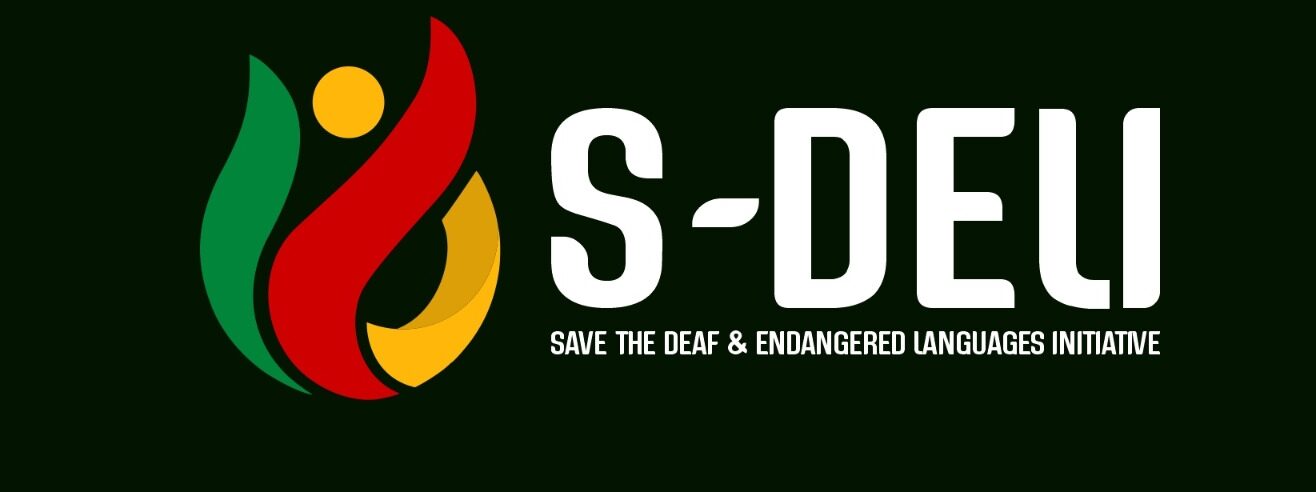Let’s Discuss Nigerian Sign Language NSL – Chapter 1
First let me establish an analogy with a spoken language. Igbo is one of the major languages spoken in Nigeria. An overwhelming number of Igbo native speakers cannot write the language and do not know how the language works. Similarly, a great population of signers of Nigerian Sign Language, both Deaf and Hearing, do not know how the language works. This is because they (especially the Deaf) acquire the language as a necessary means of communication and only use it for that purpose.
For the sake of the expected mixed audience of this article, I tried to keep the language of discussion at a layman’s level of understanding without watering down the impact of certain technical words. And with respect to an individual signer’s idiosyncrasies, I tried to provide general descriptions that cut across what is acceptable as Nigerian Sign Language.
Phonology (Sign Structure) – phonology is the study of sound segments or unit of sounds of a language. sounds are applicable to spoken languages, because sounds combine to form words in spoken languages. Scholars have argued why we also use the term ‘phonology’ to describe signed languages since they are not vocal. In sign linguistics, units of signs in signed languages are equivalent to units of sounds in spoken languages. Four ‘phonological’ parameters are used to describe most signed languages of the world – handshape, movement, location, and palm orientation. These are equivalent to the phonological parameters used to describe spoken languages.
- Handshape
Nigerian Sign Language can be described in terms of its handshape with regard to the units of signs. Handshape is described as the “configuration that the hand makes when producing the sign.”1 Every signed expression begins with the shaping of the hand (or finger) to designate what is to be signed, just as every speech begins with the shaping of the mouth to accommodate the initial sound of the word to be pronounced. Some handshapes are iconic, while others are not. For instance, the handshape for TREE in NSL (which is same in ASL) is iconic; it very much has the resemblance of a tree. Signing the letters of the alphabet gives a typical example of the use of handshape in signed languages.
- Movement
We also describe Nigerian Sign Language in terms of movement of the hand, just as we describe the vowels of spoken language in terms of the movement of the tongue in the oral cavity. For signs that involve movement, the movement takes place almost simultaneously with the handshape, and movement takes place within a given sign space. Like the handshapes, some sign movements are iconic, for instance, the sign for DRIVING in NSL is iconic. Although movement when signing might involve the movement of other body parts, movement that is captured at phonological analysis is movement of the hand.
- Location
Location in NSL suggests the point from where the sound is produced. Think of location in sign as in the initial location of the tongue in the production of glides, say [aɪ] in “buy”, where the sound is produced from the location of [a] towards the location of [ɪ] as the tongue glides from the initial position to the final position in the oral cavity. The location of a sign is also realized within the given sign space – it could be a point on the body part or in the space.
A sign is iconic when the sign has a
resemblance of the object or idea it stands for.
Palm Orientation
This describes the direction that the palm faces when the sign is formed. The palm usually faces away from the signer in most signs. However, the palm can face any direction in real time discourse. Palm orientation is an obvious parameter with which a unit sign is described. The above four parameters, however do not work in isolation, they complement one another in discourse.
Morphology (Word Structure) – many hearing people in our communities still believe that signed language is not a language or is inferior to spoken language. Unfortunately, Nigerian linguists contribute to the promotion of this ideology by their failure to study signed language as they do to spoken languages and to work towards its development. This applies to other African signed languages and African linguists. As a linguist, I studied the internal structure of Igbo words, a spoken language in Nigeria, a study that intrigued me to know the beauty of the internal structure of words of languages. Part of my recent studies has also been dedicated to the study of name signs in NSL, in order words the structure of names in NSL. Nigerian Sign Language seems to capture all the noun categories, verb categories, prepositions, adverbs and adjectives, and the generative capacity of the language allows it to generate, derive, create words to fill up in real time discourse, where core words may be lacking, although lack of development of the language has made it to be lacking in modern scientific words and expression, even such that are needed to teach science subjects in schools.
Syntax (Sentence Structure) – many signed languages of the world are known to be influenced by their neighboring spoken language(s), especially, structurally; the Nigerian Sign Language is not alone on this. Nigeria is described to have over 500 spoken languages, with English as an official language, not excluding pidgin, which is becoming the mother tongue of some linguistic communities. However, NSL is largely influenced by English language so much that it assumes a prominent amount of English sentence structure. NSL is developed from ASL, which has a conspicuous different sentence structure from English, but NSL retains a large amount of ASL’s vocabulary probably because those words are also English words, and at the same time takes the sentence structure of English, partly because English is a language of mutual intelligibility across the country, but more importantly because what is most appropriately called NSL is primarily taught and acquired in Deaf schools, where English is also used as a language of instruction.
Gestures – gestures form an integral part of Nigerian Sign Language and are used intermittently in discourse to “fill up” in place of actual signs. Gestures are not signs, but are embedded in most if not all signed languages in line with the cultural rules of the language in use. Modern sign linguists are beginning to dedicate a great deal of their time studying gestures in both signed and spoken languages. Non-fluent signers, both deaf and hearing, use gestures a lot to complement the missing signs, while fluent signers use gestures sometimes as a compulsory aspect of the signing expression and sometimes for the beauty of its use. Whichever purpose, gestures in Nigerian Sign Language is an important phenomenon, except for facial expression, which is scarcely prominent in the language.
Sign Space – the rectangular space in the air between the forehead and the lower abdomen constitutes the sign space, although some signed languages or some signers may tend to use more than the given space, as such, we consider a signer’s idiosyncrasy, when discussing sign space. It is my opinion that Nigerian Sign Language makes use of a moderate sign space within the given space, in other words, signers do not generally raise their hands above the forehead or lower them below the lower abdomen during signing.
- In this article, ‘signed language’ refers to a language that is signed as opposed to spoken, while ‘Sign Language’ refers to a language in question, e.g. Nigerian Sign Language (NSL), American Sign Language (ASL).
- I understand the technicality of this topic, and I tried to use less professional expressions, to capture the interest of readers across the board, however, the professional expressions used could not be substituted without reducing the impact of the article, hence they call for your comments and questions.

